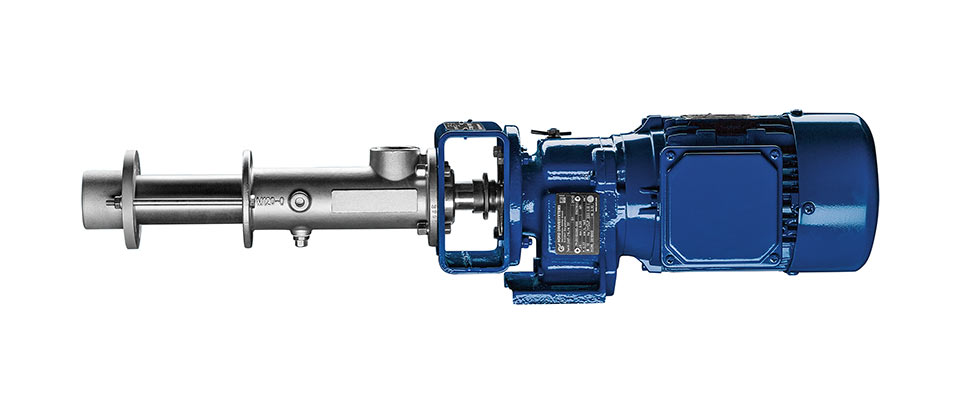
One generating station maintenance manager found himself in a familiar situation when handling reoccurring maintenance issues with diaphragm pumps: doing the same thing over and over again because that is the way it has always been done, but knowing there could be a better way to accomplish what was needed. However, the risk of trying something new and potentially failing seemed high.
The Arkansas Electric Cooperative Corporation (AECC) Magnet Cove Generating Station was experiencing a high level of maintenance with their diaphragm metering pumps. These pumps were part of the plant’s selective catalytic reduction (SCR) process. A solution of 29 percent aqueous ammonia and 71 percent water was being injected into the system to reduce nitrogen oxide (NOx) emissions.
This process takes place in the heat recovery steam generator (HRSG) and is crucial to the operation of the plant. The hot gases being discharged into the atmosphere from the HRSG must meet government regulations in regards to NOx emissions for public safety. If the SCR process malfunctions, the entire system must be shut down, and no power can be generated.
The Problem
The high level of maintenance required by the diaphragm pumps was not only costly, but also a safety hazard to the maintenance crew. Anytime users are around aqueous ammonia, they have to take precautions because there is a safety risk. The maintenance crew was spending approximately 16 hours a month working on these pumps around the aqueous ammonia solution.
“We would have to rebuild each of the pumps once a year. This was a huge expense at $1,500 to $2,000 in parts alone, plus the maintenance time,” said Joey Vanmeter, maintenance supervisor at AECC. “We were replacing the bladders three times a year at $500 each as well. Operators and maintenance personnel were constantly in the pit having to make adjustments to the old diaphragm pumps. This was a huge safety risk.”
The Solution
A sales engineer was responsible for calling on the Magnet Cove Generating Station. The sales engineer learned of the high maintenance level the diaphragm metering pumps were requiring and suggested Vanmeter look into a progressive cavity metering pump.
Vanmeter was familiar with progressive cavity pumps working well in oil applications but was hesitant to switch to a different product for such a critical process. Diaphragm metering pumps are the most commonly used pump for this application in the generating plant world. Going outside the “norm” and switching to something different would be a huge risk.
Vanmeter also knew he had to have a pump that could handle a range in suction pressures, specifically down to low levels. Within the SCR process, valves open and close on demand, varying the flow rate, and therefore varying the amount of pressure in the piping. Aqueous ammonia (ammonium hydroxide) begins vaporizing at approximately 85 F. This change from a liquid state to a gaseous vapor results in a change in pressure as well. These two factors along with the installation taking place outdoors in varying high summer temperatures mean the net positive suction head available (NPSHa) can dramatically decrease. A pump with a low net positive suction head requirement (NPSHr) is needed to keep the operation running smoothly throughout all levels of NPSHa.
NPSH is the difference between suction pressure and vapor pressure. NPSHa and NPSHr are critical to understanding if the system is designed correctly and if the pump selected is the correct style for the system. NPSHa refers to how much pressure the system has available for the pump to use, and NPSHr is the minimum amount of pressure the pump can operate at without cavitation. NPSHa must always be greater than NPSHr.
Progressive cavity pumps have a low NPSHr and may be a solution for this type of application. The design of the interference fit between the rotor and stator allows for the low NPSHr. A pump with a high NPSHr and not enough NPSHa would cavitate and ultimately fail.
Vanmeter continued his research and spoke with a manager at a water treatment facility in Florida using progressive cavity metering pumps on a solution of bleach and 19 percent aqueous ammonia. The reference spoke about the pump’s performance, low maintenance and the fact that they do not run dry.
After hearing this positive feedback from an end user, Vanmeter decided to move forward with the purchase of a progressive cavity metering pump to use as a trial. The pump was installed temporarily to ensure it would work before taking out the old diaphragm pumps. This was a big change in the thought process for this application and inherently had some risk. If the metering pump had failed on this critical application, Vanmeter would have needed the redundancy of the installed diaphragm pumps to ensure he would be able to get the system up and running.
The Result
The progressive cavity metering pump had no problems during the trial installation and was later installed permanently along with two more that replaced the three previously used diaphragm metering pumps.
Since installation, Vanmeter has had nothing but praise for the pumps. The metering pumps have been installed since April/May of 2019 and have required no maintenance. This meant reduction in maintenance and the elimination of a large safety risk for his crew.
The energy savings has also been welcomed. The SCR system that controls the NOx emissions now runs on one metering pump.
“The reliability has been great,” Vanmeter said. “The upfront costs and maintenance costs are less, they work, no pulsation dampeners are required, we are saving energy, and the safety benefits are all positives.
"We had to change our mindset, but it was an all-around gain.”

